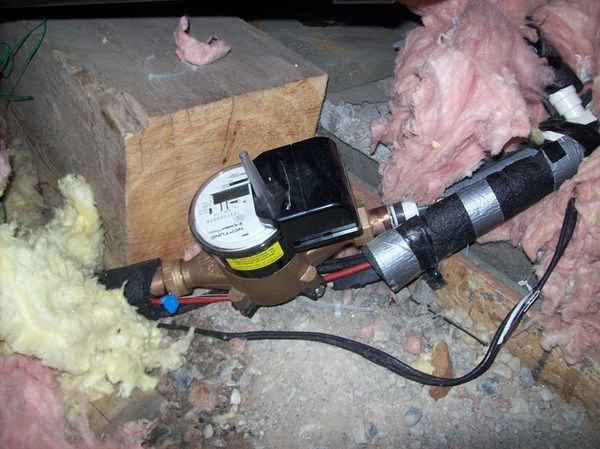When it comes to its water and sewer utility, the City of Thompson and its residents remain in an almost diabolically perfect catch-22.
Up until 2011, Thompson residents didn’t pay for water. Well, actually they did, but they didn’t feel like they did because they didn’t know how much water they used or how much of their property tax bills water and sewer services necessarily represented. Since then, however, they have been painfully aware of the actual effect on their wallets because they have water meters and get quarterly bills which tell them precisely how much water they have used, provided they used more than 14 cubic metres in three months. For those who haven’t, it doesn’t matter anyways, since it’s impossible for them to spend less on their household water.
Getting water meters and quarterly bills wasn’t exactly a made-in-Thompson plan. The city knew it had a sewage treatment plant that no longer met provincial environmental standards. It also knew, because the province told it so, that unless the city started charging for water by consumption, the provincial government wasn’t going to pay for any portion of a new one. That new sewage treatment plant has had more than its share of problems in the few years that it’s been in operation, and although the provincial and federal governments covered two-thirds of its $36 million price tag, the water utility is responsible for taking care of ongoing operating costs, which, as it turns out, are higher than the costs of the old one it replaced.
At the other end of the spectrum, there’s the water treatment plant, which takes river water and converts it into something fit to drink. For practically all of Thompson’s history, apart from just the past few years, Vale operated the water treatment plant and sold the city potable water for residents to drink and wash with, water their gardens, etc. Unfortunately, the agreement made between Inco, the precursor to Vale, which operates the Thompson nickel mines these days, and the provincial government, reached back in 1956, said that, although the mining company had to build a water treatment plant, it could unilaterally turn over its ownership and operation to the city anytime it wanted. When that finally took place in 2016, the city inherited new staffing costs, as well as those to maintain the facility and to pay for capital upgrades as parts of it wore out. All those costs have to be included in estimates provided to the Public Utilities Board of Manitoba, which has the ultimate authority for setting water utility rates for the city’s municipalities. The PUB also requires that water utilities plan for balanced budgets, meaning the money coming in from the sale of water and sewer services has to equal what providing those services costs. As costs got higher due to inheriting the water treatment plant and building a new sewage treatment plant, the system basically ensured that costs for water consumption would have to get higher.
Compounding these realities are two other factors, one of them directly related to water, and the other one not, though perhaps it could partially be, indirectly. The moment Thompson residents started having to pay for water based on how much they used, naturally they started using less. It’s one thing to hose down your driveway when the cost of that extra water is getting split up among all the taxable properties in Thompson. It’s another when you’ll be billed directly. Since water meters were installed in Thompson, water use has gone down by about 30 per cent. In theory, that should mean the water treatment plant can produce less, which would reduce the cost of running the utility a little, but in reality about 40 per cent of treated water never makes it to meters. Some is used for firefighting or hydrant flushing, but much of it just flows out of broken pipes when water breaks occur. To say that money just goes down the drain would be symbolically true, though in fact it just seeps into the ground. If the percentage seems high, that’s because it is. The PUB says water utilities should aim for wastage of about 10 per cent.
If costs stay about the same but usage goes down, there’s only one way to account for the difference: higher rates. At the same time, the population is shrinking, there are more unoccupied houses and fewer overall customers to cover the costs. It’s difficult to quantify but certainly there are instances of at least some people who moved out of Thompson in order to relocate somewhere where life is more affordable.
Work being done over the next five years to replace metal water and sewer pipes, which corrode over time in acidic soil, with PVC ones that don’t, should eventually reduce the amount of treated water that goes to waste in Thompson, but the utility also has to cover its portion of those costs, which are mostly funded by federal and provincial grants. So, like gas, bacon and everything else, the cost of water will rise this year and there isn’t much reason to hold out hope that the trend is going to change anytime soon.




